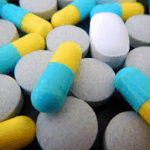Contents
Anatomy of the Normal Penis
From Within:
The penis is composed of three cylinders enclosed in 2 thin layers of muscle/fascia and a layer of skin. The tip carries the glans, a bell shaped mass of erectile tissue that is very sensitive to touch as it is rich in nerve endings.
One of the three cylinders is the corpus spongiosum that contains the urethra. The urethra is the tube through which urine flows. It ends in the glans with the urethral meatus (opening through which urine flows. The corpus spongiosum courses along the length of the penis, on its under surface, under the skin.
The two other cylinders are the corpora cavernosa. These are the structures responsible for rigidity and therefore erection. The course next to each other above the corpus spongiosum under the skin of the upper surface of the penis. Each corpus cavernosum is composed of erectile tissues in the form of microscopic spherical spaces (Sinusoids) that accommodate blood and expand when blood flow into them increases. Each sinusoid is surrounded by microscopic muscles that control its diameter. The sinusoids are enclosed in the outer wall of the corpus cavernosum that is a firm, expandable layer of fibrous tissue named the “tunica albuginea“.
The neurovascular bundle is a collection of nerves, arteries and a vein that course along the penis on its upper surface, from the glans to the base of the penis. It includes the nerves that convey sensation from the glans: the dorsal nerve of the penis.


At the base of the penis (towards the abdomen), the corpora cavernosa are attached to the bony pelvis by adhesions to between their deepest parts (the crura) and bone, and by a ligament that attaches the corpora cavernosa to the middle of the pelvis and to the anterior abdominal wall: the suspensory ligament.

Each corpus cavernosum has a feedingartery that fills it with blood, and a draining vein that lets blood out. The vein starts inside the corpus cavernosum between its wall (tunica albuginea) and the sinusoids, such that if the sinusoids expand, they may compress the vein and prevent blood from exiting the corpus cavernosum.
The penis is covered by skin, underneath which is a thin layer of tissue named the Colle’s fascia, beneath which is a thin muscle called Dartos Muscle or Buck’s fascia
From Without:
Normal Length pf the penis:
Normal length is variable from race to race, but there is an accepted average. Measurement are taken in the non-erect state by pulling on the glans forwards to stretch the penis and dipping the ruler into the pubic fat that surrounds the penis down to the bone, so that the measurement is taken from the bone to the glans, and not from the skin to the glans. This measures the actual length of the penis and not the apparent length. The stretched non-erect length should at least be 7cm. In the erect state, length measured in the same way should be at least 11 cm. The length of the vagina is 10cm on average, which makes 11 cm a normal length for the penis.
Normal Width of the penis/ Normal Diameter of the penis:
There is no consensus about the normal diameter, but if measured with a taper, the perimeter should at least be 10cm. It has to be noted that the vagina is surrounded by muscles that tighten it around the penis, regardless its diameter.
Straightness of the penis:
The penis is mostly straight. However, many men have variable degrees of curvature affecting the penis. This poses cosmetic problems. This may also make intercourse difficult or painful to the female if curvature is more than 30 degrees, especially it is downwards or to a side.
By curvature we mean that the penis is straight at its base but has a bending point distally. A straight penis pointing upwards, downwards or to a side without a bent is not considered curved.
Angle:
The penis usually makes an angle of around 90 degrees relative to the surface of the abdomen. This may vary. The angle may be acute with the penis pointing upwards, or obtuse with the penis pointing downwards. This is acceptable as long as it does not make intercourse difficult or disturb the individual or his partner psychologically. A rigid penis pointing downwards is an erect penis. Erection does not necessarily mean that the penis should point forwards or upwards.
Urethral Meatus:
This is the urine outlet at the tip of the penis in the glans. Hypospadias is a disorder where the urethral meatus is not at the tip but is somewhere along the lower surface of the penis. This may require surgical correction.
How Does Erection Occur?
The mechanism of erection to be discussed here assumes that normal masculine development has occurred at puberty by the correct balance between genes and hormones.
1-The Nervous System
The brain exerts the main control over sexual behavior. Special chemicals (neurotransmitters) are present in the brain, some stimulatory for sexual behavior and some inhibitory. At base line, the brain is under inhibitory effect by day and stimulatory effect at sleep.
Sexual stimulation may be sensory, by touch, visual, auditory, olfactory or imaginary (fantasies). Sensory stimuli (touch) reach the brain from the penis and skin through nerves then up the spinal cord. All of those stimuli converge on the brain to induce the release of more stimulatory neurotransmitters.
The released neurotransmitters fire impulses down the spinal cord, then across the peripheral nerves to the penis.
2-The Penis
Nerve impulses reach the penis via the “pudendal” nerve. The impulses induce neurotransmitters in the penis that start the cascade of events that cause erection. Nitric oxide (NO) is the neurotransmitter that is most important for erection.
Nitric oxide (NO) induces dilatation (opening up) of arteries that pump blood at high speed and large volumes into the sinusoidal spaces of the penis. “NO” also induces those spaces to dilate by relaxing the sinusoidal muscles that surround them, thus accommodating the pumped blood inside the corpora cavernosa which are the two longitudinal cylinders spanning the length of the penis and responsible for erection . The penis expands due to the large volume of blood being pumped in. The veins become compressed against the inner wall of the corpora cavernosa. Being the outlet of blood, the compressed veins prevent blood from leaving the penis. Gradually, blood volume and pressure increase inside the corpora cavernosa leading to rigidity of the penis. Rigidity becomes maximum when a muscle surrounding the base of the penis (bulbocavernosus) contracts, tightening the blood filled penis and increasing blood pressure within.
Nitric oxide (NO) is broken down and degraded by and enzyme named “phosphodiesterase inhibitor” or (PDE)
Normal Erection
Steps / Events:
In the presence of normal anatomy and normal hormones, sexual stimuli (touch, vision, fantasies..etc), a transparent fluid (prosemen) starts leaking slowly from the penis, usually as a one or more drops. Erection starts and is maintained for variable periods of time until ejaculation occurs. Following ejaculation, erection is lost gradually and cannot be re-induced for a period of time called the “refractory period”. This is natural. The speed with which erection fades following ejaculation increases with age, and so does the refractory period. The refractory period ranges from seconds in youth to weeks in the elderly.
Normal Frequency of Intercourse:
This varies from with age. The normal frequency in the second and third decades is four times per week on average. This naturally varies from one person to the other, from one relation to the other, but this is the acceptable average. This decreases in the fourth decade to 2-3 times per week, in the fifth decade to once per week, down to once per month in the elderly. It is therefore normal to observe a decline in sexual interest as age advances.
These frequencies assume that there are suitable and comfortable conditions that promote sexual behavior as regards general health, work load, psychological harmony with the partner..etc. Without those prerequisites, erection will be very difficult to attain or maintain.
There are normal ups and downs that affect every man’s sexual power. It is normal to have a period where erection is less likely to occur, in response to psychological stress, work load, interpersonal conflicts…etc. These periods resolve spontaneously with improvement of the general condition, upon vacations for example.
Morning Erection
Normally, one experiences a rigid erection when he wakes up every now and then. This is “Morning erection” or “nocturnal erection”.
Presence of normal morning erection is a sign that one is normal, at that impotence -if any- is psychogenic (due to stress).
Morning erection does not necessarily occur every night. Noticing nocturnal erection every day, every week or even every couple of weeks is sufficient to ensure that one is normal concerning the structure and function of the penis.



